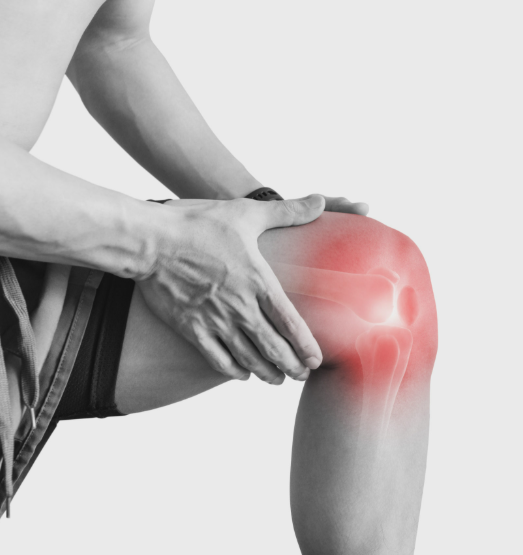If you experience pain in your knee when you bend it, you’re not alone. This type of discomfort is common and can happen unexpectedly, whether you’re exercising, getting into a car, or even just tying your shoes. Knee pain, especially during movement, can be a sign that something isn’t quite right in your joint. Understanding the cause of your knee pain is key to addressing it effectively.
What Could Be Causing Your Knee Pain?
Knee pain when bending can stem from several different factors. Here are some of the most common causes:
- Tight muscles that are pulling on the joint
- Wear and tear on the cartilage
- Inflammation inside the knee
- The flare-up of an old injury
Determining the root cause of the pain is essential in finding the most effective treatment. Let’s explore some potential conditions and how physical therapy can help address them.
Common Knee Injuries That Can Be Treated With Physical Therapy
Whether your knee pain is from a recent injury or a long-standing issue, physical therapy offers a non-invasive and effective way to manage and heal the pain. By focusing on restoring strength, flexibility, and function in the knee, physical therapy helps target the underlying causes of the pain and gets you back to your normal activities.
Patellofemoral Pain Syndrome (Runner’s Knee)
One of the most frequent knee injuries among active individuals, runner’s knee causes pain in the front of the knee, especially during activities like climbing stairs or sitting for extended periods. This pain is often due to muscle imbalances or improper knee movement.
Physical therapy for runner’s knee includes:
- Strengthening exercises for the surrounding muscles
- Corrective exercises for alignment
- Techniques to prevent recurring knee pain
Patellar Tendinitis (Jumper’s Knee)
Patellar tendinitis is a condition caused by overuse, where the patellar tendon becomes irritated. This tendon connects your kneecap to your shinbone and helps absorb weight during movement. When the tendon is overused, it can cause sharp pain, particularly when bending the knee.
Physical therapy for patellar tendinitis involves:
- Strengthening exercises for the quads and hips
- Stretching routines to ease tension on the tendon
- Adjustments to your activities to prevent further strain
Meniscus Tears
A meniscus tear can cause clicking, popping, or locking in the knee, especially following twisting movements or sports-related injuries. If the tear is not severe, physical therapy can help avoid surgery by focusing on reducing inflammation and improving knee stability.
Rehabilitation might include:
- Controlled exercises to restore range of motion
- Low-impact training to support the joint
- Muscle strengthening to prevent future tears
Ligament Tears (ACL, MCL, etc.)
Torn ligaments, such as those in the ACL or MCL, can cause severe pain and instability. These injuries usually happen after high-impact trauma or sudden, sharp movements. In cases where surgery isn’t required, physical therapy becomes an essential first step.
Therapy for ligament tears focuses on:
- Exercises to support the knee’s function
- Stability drills to regain confidence in movement
- Gradual return to physical activity
Knee Osteoarthritis
Osteoarthritis is a chronic condition that causes the breakdown of cartilage in the knee. This leads to stiffness, difficulty bending, and pain during everyday movements. Physical therapy can help reduce pain and improve knee function, especially when combined with a healthy lifestyle that includes weight management and strength training.
A physical therapy plan for osteoarthritis may involve:
- Low-impact cardio and strengthening exercises
- Techniques to support the knee during daily activities
- Movement retraining to reduce strain on the joint
Post-Traumatic Arthritis and Other Conditions
Injuries like fractures or ligament tears can lead to post-traumatic arthritis months or even years after the injury. Additionally, conditions such as rheumatoid arthritis or a Baker’s cyst can mimic mechanical knee pain, making diagnosis and treatment more challenging.
A physical therapist can assess your medical history and provide treatments tailored to your condition, which might include:
- Customized exercises for long-term knee health
- Joint protection strategies during activity
- Monitoring symptoms to determine if surgery is needed
When to Seek Professional Help
If your knee pain persists despite rest, or if it worsens over time, it’s important to seek medical advice. While physical therapy can address many knee issues, some cases may require further intervention. In these cases, a consultation with an orthopedic specialist may be necessary.
How We Help You at Vitality Therapy and Performance
At Vitality, we focus on understanding the root cause of your knee pain. We begin with a thorough physical examination to pinpoint the exact issue in your knee joint. By assessing your movement patterns, joint stability, and medical history, we can create a treatment plan tailored specifically to your needs.
Your customized physical therapy plan may include:
- Strengthening exercises for muscles around the knee
- Knee-specific exercises to improve joint function
- Manual therapy to reduce pain and swelling
- Activity modifications to prevent further injury
Our goal is to help you stay active and heal naturally, avoiding unnecessary procedures like surgery when possible.
Get Back to Doing What You Love
If knee pain is affecting your daily movements or physical activities, don’t push through the discomfort. Physical therapy can provide the relief you need to move better and regain strength. We are here to help you find the right treatment plan that works for your life and goals.
Contact us today to schedule your first session and start your journey toward a pain-free knee.

Leave a Comment